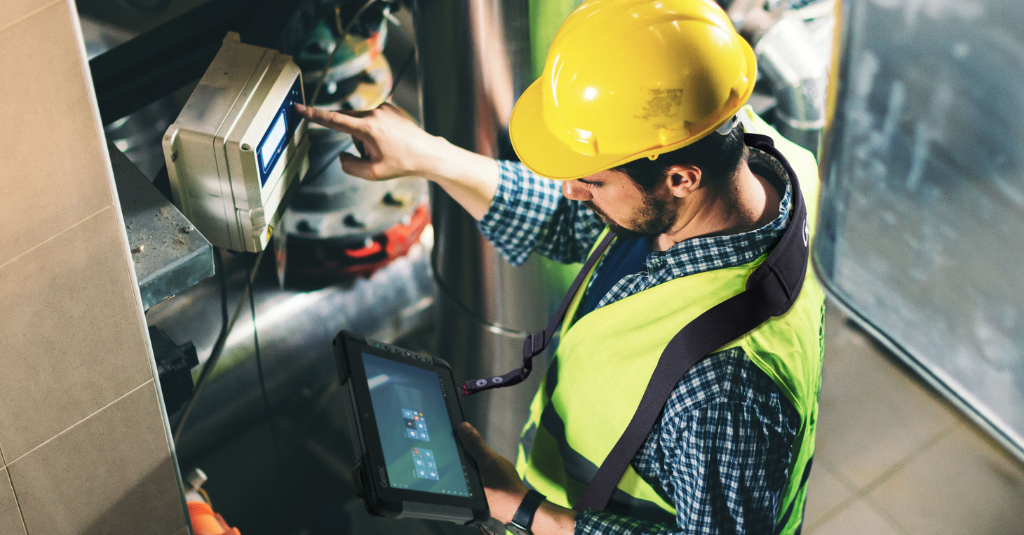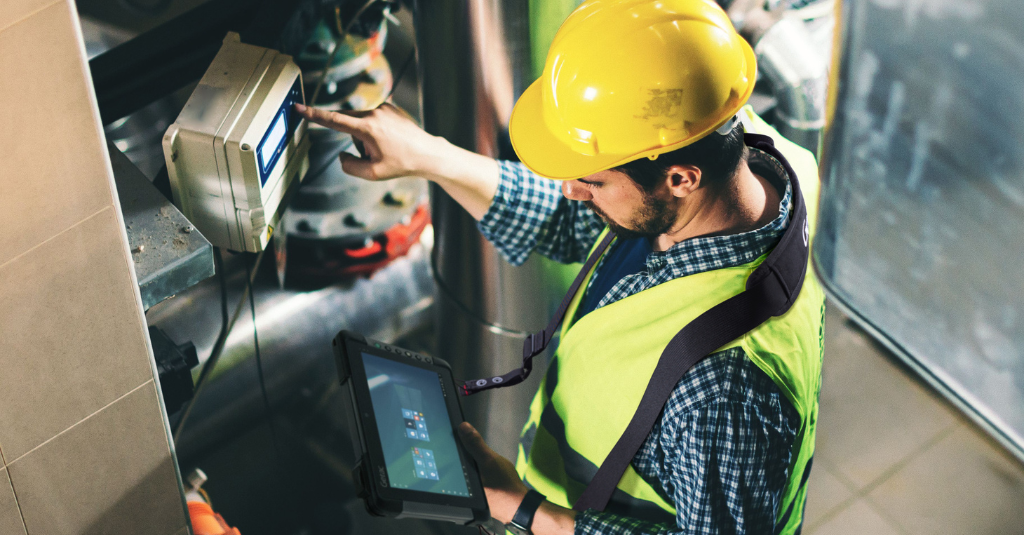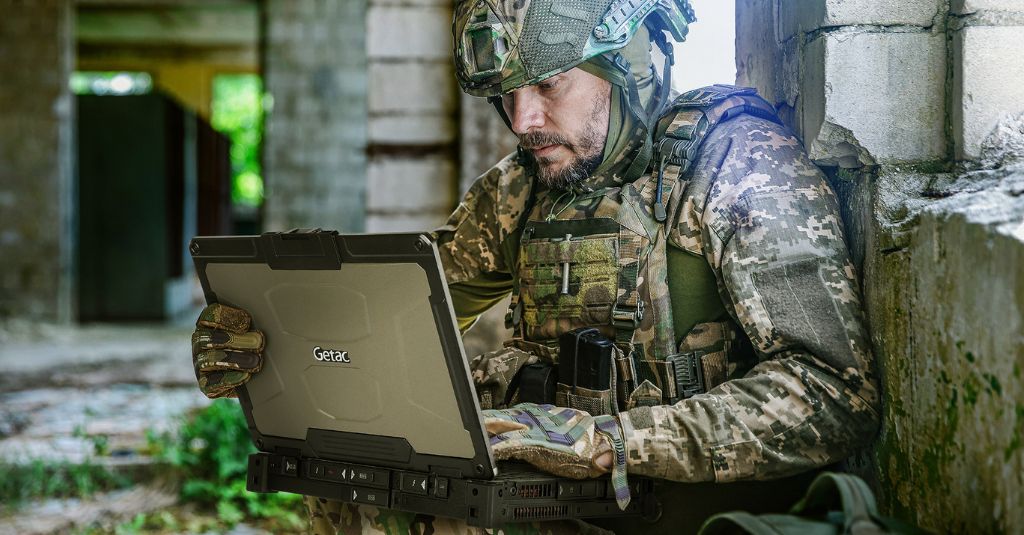As one of the leading rugged computer providers, Getac offers extensive rugged computing product lines and serves a wide range of vertical markets.

Getac Select
A combination of rugged computing devices, software, accessories and professional services in a purposeful range of specifically tailored solutions.
Getac Video Solutions
Video capture, evidence management, rugged hardware and robust software solutions for law enforcement and other industries.
Defense
Mission-critical COTS computing that delivers high powered processing and reliability in operational environments
Public Safety
Law Enforcement, EMS, Fire & Rescue applications
Utilities
Smart Meter Reading and Installation, On-site Safety, Utility Asset Management, Workforce Management for Utilities, Mobile GIS, Surveying and Mapping
Transportation & Logistics
Railroad Management, Airport Management, Port Management, Long-haul Delivery Fleet Management, Warehouse Materials Handling
Industrial Manufacturing
Industrial Programming and Robotic Control, Facility management, Compliance and Inspections, Workforce Management, Inventory and Warehouse Management, Factory Automation and Plant Monitoring, EAM and CMMS Solutions.
Automotive
Optimized Rugged Mobile Solutions to drive a smarter approach throughout the automotive value-chain.
Natural Resources
Mining, Forestry and Construction applications
Oil & Gas
Remote Support, Asset Management, Field Data Analysis, Workplace Safety
The global economy is decarbonizing, infrastructure is aging, and customer expectations are sky-high. Unsurprisingly, the global utility sector is under immense pressure to meet a pivot in delivering power efficiently.
Fortunately, digital transformation and artificial intelligence are helping utilities tackle these challenges head-on. Data-fueled technology is helping sectors make energy networks more resilient and secure and finding ways to integrate renewable energy into systems made for carbon-based processes. For example, AI-driven predictive maintenance helps companies see where the next point of failure in aging systems might be before systems go down.
Given the asset-intensive nature of the utilities sector, the workforce needs to access to these insights across the infrastructure. Compact rugged laptops and tablets are an essential tool for the utilities sector.

A ruggedized computer or device is vital for utility field workers, ensuring reliability in demanding conditions for seamless operations.
To explore the role of rugged computers in industry, we commissioned a global study with the research firm IDC. Nearly half of the March 2024 survey respondents in the utilities sector expect to increase spending on rugged devices over the next 12-18 months.
The asset-intensive industry can significantly benefit from rugged devices with high processing power, superior IP ratings, and ingress protection. By offering high-speed 5G wireless connectivity and delivering exceptional performance even under extreme environmental conditions, they facilitate access to critical information in the field, improving worker productivity. Employees can perform inspections and keep assets running, which saves utilities steep labor costs. By using UHF-RFID (Ultra High Frequency RFID) they can quickly scan many tags simultaneously several feet away.
Equally important, fully rugged devices are designed for demanding environments. They are engineered to withstand high-temperature ranges, bumps, drops, direct sunlight, rain, dust and harsh conditions that utility workers often work in. Consumer devices buckle under such conditions, which is a plus point when considering the total cost of ownership (TCO).
Rugged devices equipped with a wide range of sensors, such as RFID and barcode scanners, can help workers gather accurate information and tag it with the necessary details for asset management. Accurate quality record-keeping is key for accessing maintenance histories and enabling data-driven decision-making.
Accessing information real-time enables workflow automation, which drives the monitoring, scheduling, and dispatch of technicians, reducing bottlenecks in operations. Predictive maintenance solutions allow workers to receive alerts in real-time.
For the industrial and utilities industry, rugged devices can improve worker productivity, reduce equipment downtime, and enhance worker safety in demanding and harsh environments.
In the face of intense pressures, the utilities sector is focused on achieving several targets, including reducing operational risk, costs and improving supply chain performance. Using compact, rugged, engineered devices that can operate as intended under harsh environmental conditions ensures worker productivity reducing operational downtime.
Data-driven digital transformation is helping the sector resolve its challenges and evolve to embrace change. Accurate data underwrites this transformation and rugged mobile devices are an essential tool in this transformation. By providing rugged laptops with multiple connectivity options such as Bluetooth, RFID, 4G/5G enabling workers to capture information accurately and operate securely.
Before investing in a fleet of rugged devices, companies should thoroughly assess their business operations to see how and where the devices can make the most significant improvements.
Evaluating current hardware portfolio helps enterprises identify pain points that impacts their workforce. Detailed assessments also offer an opportunity to grade existing workflows and find the bottlenecks that mobile devices can tackle.
In addition, enterprises need to understand the different environments the devices will have to withstand. The best rugged devices offer ingress protection, sunlight viewability, shock and vibration resistance, and other environmental conditions.
Conducting a thorough assessment of current solutions ensures enterprises determine the integration requirements for existing business operations software, and the training workers might need.
A complete and strategic move to rugged devices is long overdue for companies in the utilities sector that have not yet adopted this technology. The resilience and reliability of utility networks of today and tomorrow depend on accurate, secure, and always-available data. Using a rugged device is vital to delivering such resilience.

Organizations should consider vital TCO factors like maintenance, durability, life cycle, and support services when investing in rugged computers for long-term value.
“You get what you pay for” is a statement made in all walks of life. TCO helps us assess its validity. The critical factor in TCO is a product's total cost (and benefits) over its lifetime. It’s not just about upfront costs; it factors in maintenance and indirect expenses such as lost cost due to downtime.
A thorough TCO analysis for rugged devices should include:
Cost of solution acquisition: This is the cost of buying and implementing rugged devices and any necessary software components.
Deployment: The installation, configuration, and inclusion of any additional infrastructure, if any, would fall into this category.
Maintenance and support: Software subscriptions, routine maintenance and servicing devices through to end-of-life form a part of TCO.
Downtime saved: A single hour of downtime could cost U.S. utilities companies as much as $300,000, increasing to upwards of $1.7 million for a little more than 5 hours. Downtime leads to lost revenue and customer dissatisfaction and needs to be factored into TCO calculations.
Improved productivity: Monitoring assets remotely and accessing data in real-time are all value-adds that should be factored into the cost-benefit analysis a TCO delivers.
Participants in the Getac-IDC survey found that improved worker productivity and reduced equipment and vehicle failure and replacement costs were key to rugged devices enhancing operations.
TCO calculations will likely also factor in the ability and performance of a rugged device fleet to be customized and scaled according to user and enterprise needs.
Given that every company is at its own stage of digital maturity and has its own unique business operations challenges, customization is critical to realizing the benefits of investment in any tech, including rugged devices and laptops.
A solid TCO analysis needs to include scalability potential. The chosen rugged device configuration should be scalable to support future ecosystems to fit in with the company’s five-year growth plans.
Given the breathtaking speed at which new technologies are emerging, Enterprises need to keep abreast of potential new solutions that can support their evolving business practices and their capability to remain competitive. In a data-driven age, rugged devices are the vehicle to deliver these gains to a vital industrial sector.
Learn more about the value of rugged for the utilities sector by downloading our whitepaper.
As one of the leading rugged computer providers, Getac offers extensive rugged computing product lines and serves a wide range of vertical markets.


